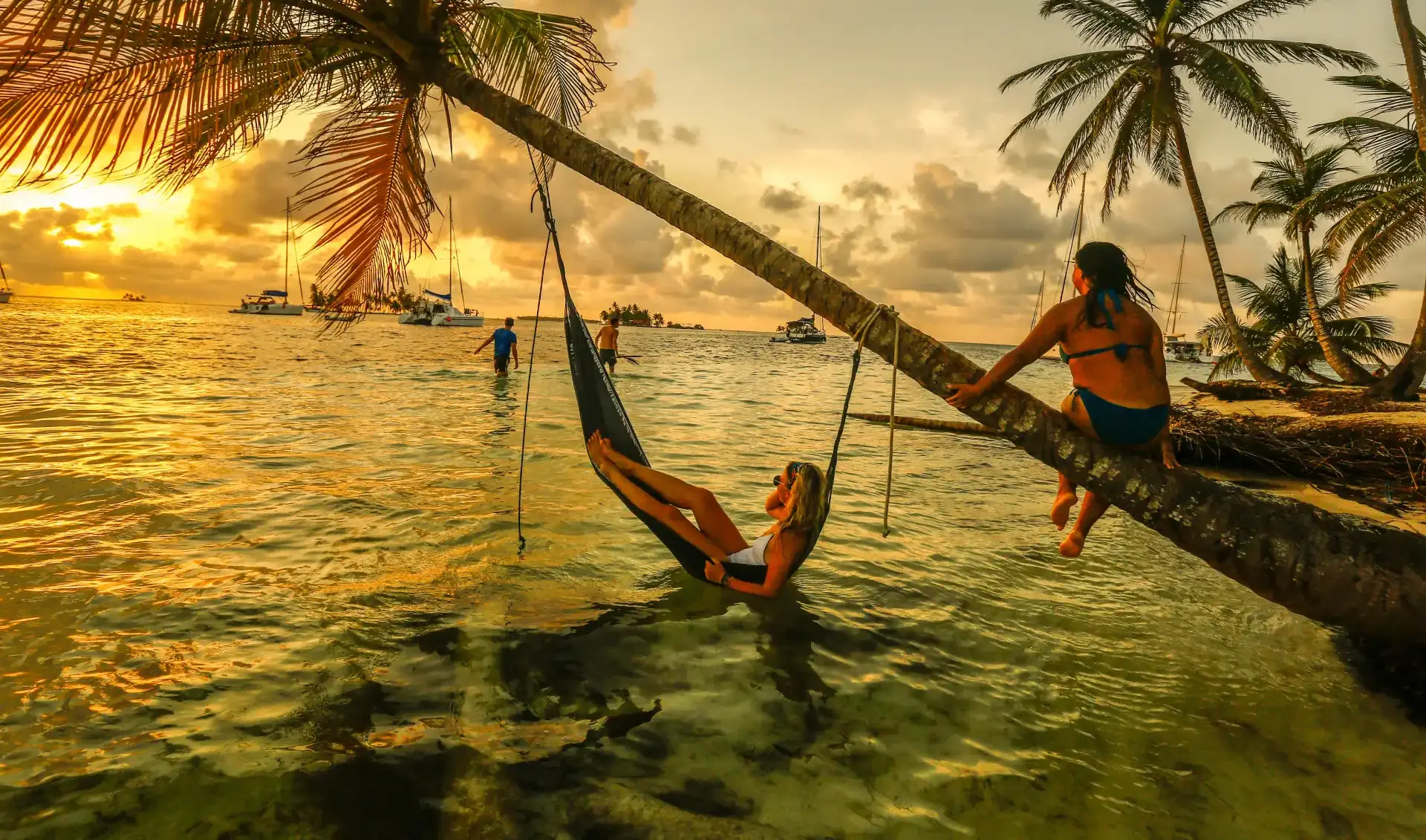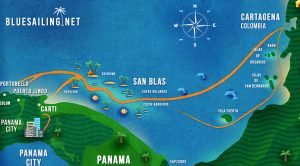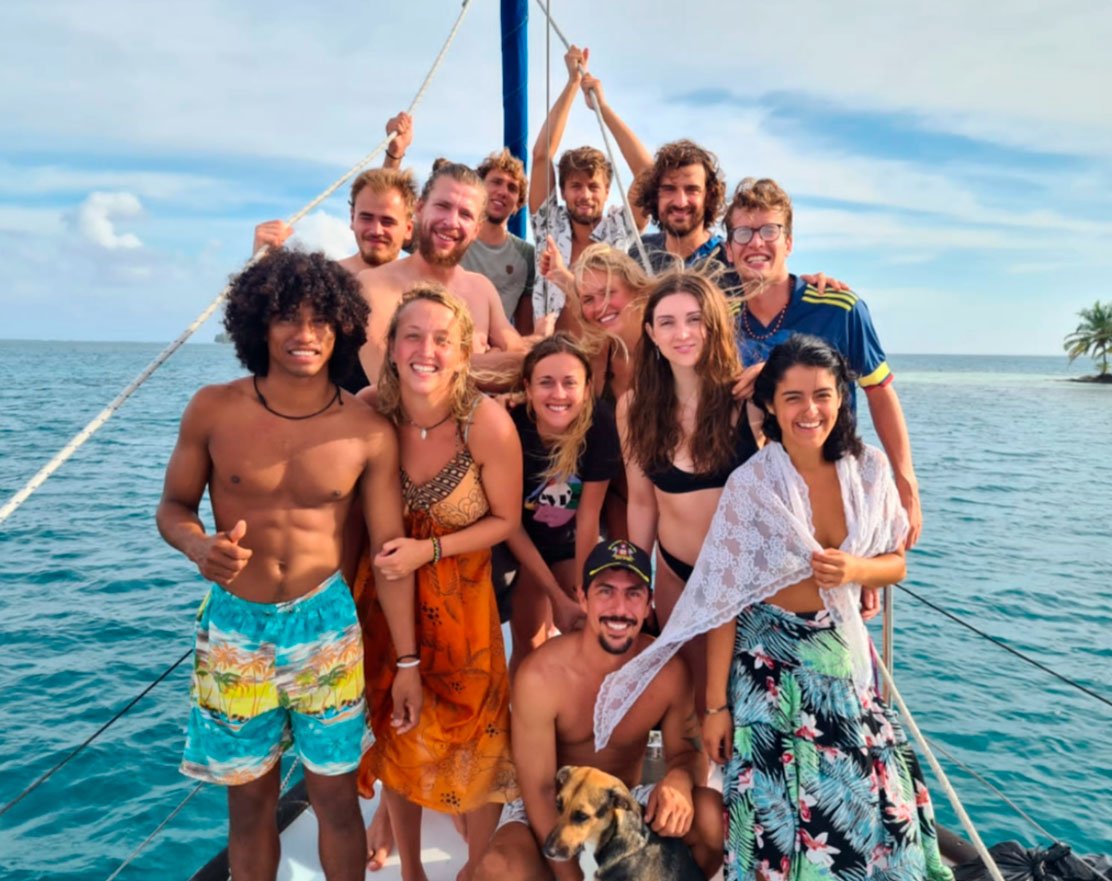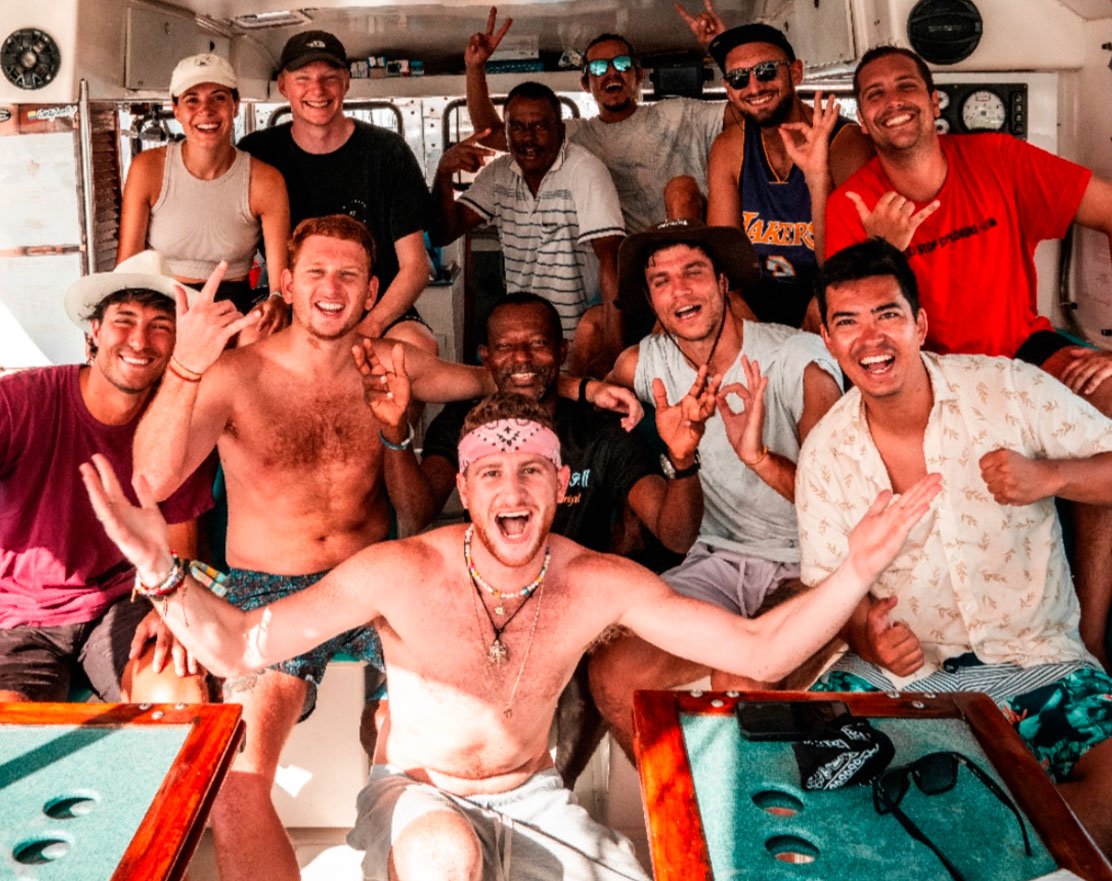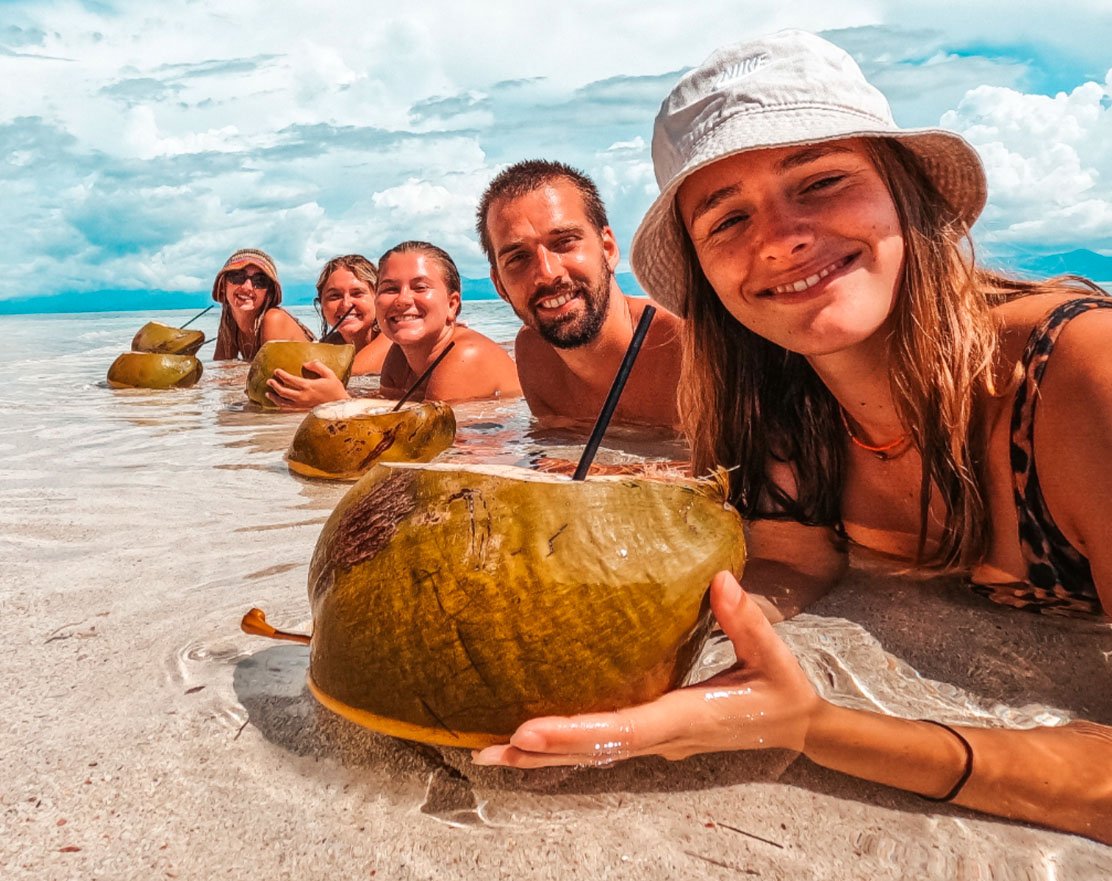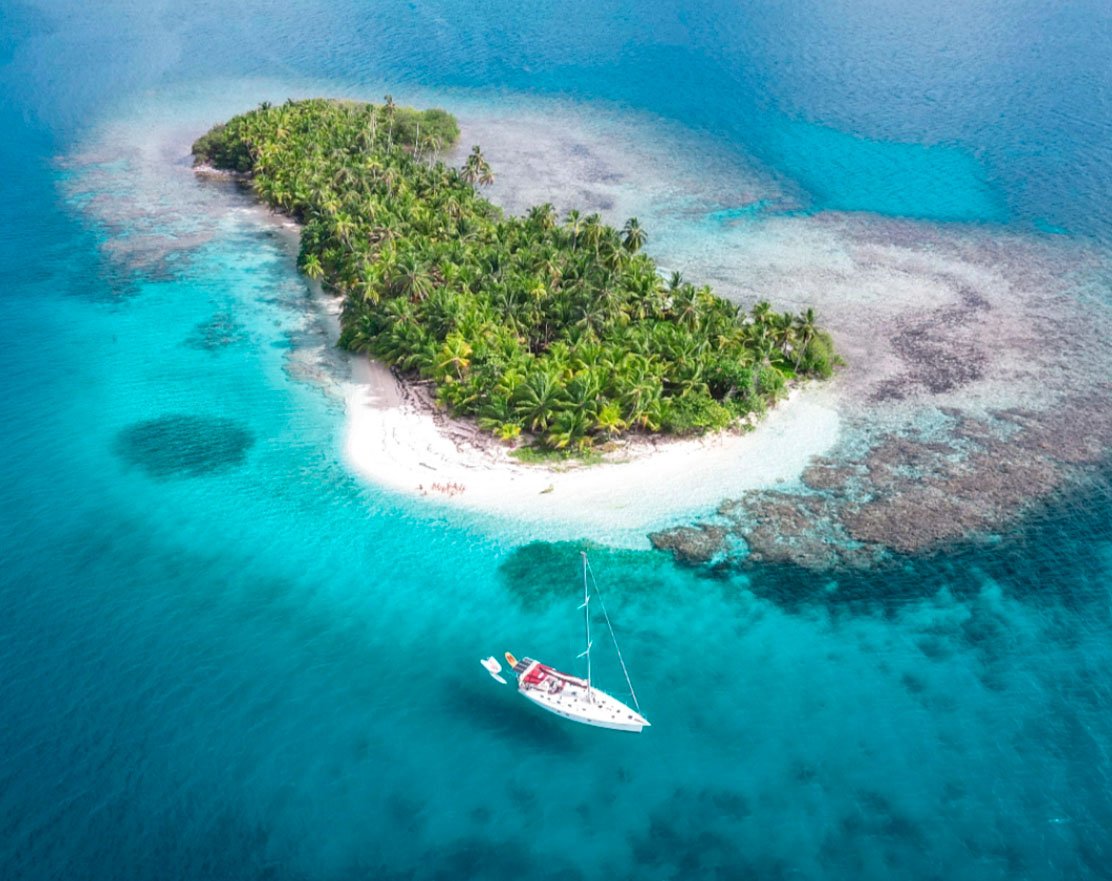
Colombia & Panama await you…
Join us for the ultimate Sailing Experience!
Our intercontinental sailing adventure between Colombia & Panama or vice versa is a once in a lifetime experience! It consists of 3 days dedicated to exploring the beautiful San Blas islands and 2 days (30-50 hours) of a unique open-sea crossing.
THE ROUTES
Colombia to Panama
Our tours departing from Colombia to Panama leave from Club Náutico marina in Manga, Cartagena. A taxi ride from the center of town to the marina takes around 5-10 minutes and costs 8-12,000 pesos.
There will be a pre-departure meeting held the day of the departure around 10 or 11 am to collect passports and payments. You will then be free for the day and return for departure, typically in the late afternoon/evening that day.
The trip lasts 5 nights starting with the open-sea crossing and then 3 days in the San Blas Islands, and ends on the morning of the sixth day.
Panama to Colombia
There are 2 departure points from Panama:
Puerto Lindo is a small seaside town on the Caribbean coast of Panama. We can organize for you a shuttle van (2 hours, 25 USD per person). The shuttle will pick you up from your hostel in Panama City and drop you at the port.
Boats that depart from Puerto Lindo typically leave in the evening of the first day and arrive in Cartagena on the sixth day, subject to sea, wind, and current conditions. You will spend the first 3 days in the San Blas Islands and end with the open-sea crossing to Cartagena.
El Porvenir is an island in San Blas. As there is only one road to San Blas and the jeeps that drive it are required to have a special license, we will organize your transport from your hostel in Panama City to the boat. It consists of a jeep and a speedboat. The journey takes around 4 hours, costs about $60 usd per person, and is not included in the price of the trip.
Boats departing from El Porvenir begin their trip on the morning of the first day and end in Cartagena on the fifth or sixth day depending on the sea conditions.
WHAT IS INCLUDED
![]()
Safety Equipment
All of our boats are equipped with essential safety gear including life jackets, emergency life rafts, multiple navigation devices, VHF radio, Satellite Phone, and GPS spot device or AIS (Automatic Identification System).
![]()
Immigration
Standard immigration check-out and check-in is included during the trip. You will receive a standard 90-day tourist visa for the country you are entering.
![]()
Food
During your trip you will enjoy three daily meals as well as drinking water, tea, and coffee. Please let us know in advance if you have any dietary requirements.
![]()
Accommodation
There are a variety of cabin options at various prices depending on the boat and cabin choice. You’ll have a bed with sheets and storage space for your belongings.
![]()
Dinghy
Each boat comes equipped with a dinghy to transport passengers from the boat to land or from the boat to the islands.
![]()
Snorkeling Gear
We provide snorkeling gear to explore the vibrant coral reefs and underwater world. Please note that in San Blas, scuba diving is prohibited in order to protect the biodiversity, and snorkeling is the only way to observe marine life.
![]()
Electricity
Each boat has reserves of energy to charge small electronics. Your boat captain will inform you of the appropriate times to charge your devices.
![]()
Play
Most of our boats are equipped with various games and entertainment options, such as volleyballs or soccer balls, cards, books, stereo system, kayaks or paddle boards.
![]()
Islands
Three days in the islands, visiting a different group (Cayos) of islands every day.
NOT INCLUDED
![]()
Kuna Tax
This tax is charged by the Kuna Yala Congress for access to the Islands. The cost is $20USD per person. This fee applies to anyone entering by boat, land, or plane.
![]()
Transport
Transportation to and from the arrival and departure ports is not included in the trip price.
![]()
Snacks & Beverages
Alcoholic drinks, mixers, and snacks are not included in the trip price. You are welcome to bring your own.
![]()
Insurance
It is recommended that you purchase personal property insurance for your trip as it is not included in the price of your tour.
![]()
Gratuities
Please note that gratuities for the crew are not included in the trip price, so if you enjoy your journey, tips are greatly appreciated.
![]()
Coconuts
You can buy coconuts on the islands, but if you take them without permission, the Guna/Kuna community may charge you a fine of $100.
![]()
WINDY SEASON
The windy season runs from mid-December to April. During this time, strong winds are common, and the sea is often rough, particularly for trips departing from Panama as the boats travel against the wind and waves. In such conditions, boats may change their routes and navigate closer to the coast. If the weather gets particularly severe, the captains may opt to use the engine to motor sail. We do not accept children under the age of 15 during this time.
In other seasons, there may not be enough wind, and the boats may rely on the motor instead. While the captains prefer sailing, safety and comfort are our top priorities for both the passengers and the boat.
![]()
IMPORTANT INFORMATION FOR PROSPECTIVE PASSENGERS
We want you to have the best possible experience during your trip to San Blas! It is important to keep in mind that traveling by sailboat requires a certain level of flexibility.
![]()
Flexibility is Key
We recommend that you give yourself 48 hours wiggle room between arrival and any ongoing flights. The ocean and wind are unpredictable, and captains may need to change the departure date due to bad weather or mechanical issues. Please be prepared for unexpected changes and keep an open mind.
![]()
Adventure travel
Our trips are not luxury or guided tours. Our captain’s top priority is to ensure your safety during the trip. The crew will provide you with the necessary resources to fully enjoy your experience.
![]()
Please inform us
If you are concerned about a tight connecting flight or have any other concerns, we will do our best to work with you. Please disclose to us if you have any physical limitations due to age, weight, or health. Also please let us know about any allergies you have.
![]()
BOOKING & PAYMENTS
Cost of the trip
The price of the trip is set by the captains of each boat and the same no matter where you book. Prices typically range between 660 and 780 USD per person depending on the boat as well as cabin preference. Prices may also vary depending on the season, so please contact us for exact pricing information.
Finalize Reservation
If you would like to confirm a reservation, please email us a readable photo of all passenger’s passports. We will then send you a request for the 60 usd per person deposit which will secure your booking. The remainder of the payment will be paid in cash to the captain when you get to the boat. Please note that your spots cannot be saved until you have sent readable copies of all passenger’s passports and paid the 60 usd per person deposit.
We handle all bookings via email and are also available to chat via Whatsapp!
![]()
CANCELLATIONS & REFUNDS
The deposit is nonrefundable. If you need to cancel your reservation, we can transfer the deposit to a future reservation, but the cancellation needs to be made at least two weeks before your departure date. If you cancel at least 72 hours before the departure date you will be required to pay 50% of the total cost of the trip. If you cancel the day of your departure no refund will be issued. If you need to change your reservation, you can do so once and at least two weeks before your original departure date. Otherwise you will have to pay a new deposit.
Our boats typically depart and arrive on time, but in the unlikely event of a delay due to bad weather, mechanical issues, crew sickness, immigration, or other unforeseeable events, we will inform you as soon as possible. If your trip is delayed, it should not be longer than one or two days. There is no compensation for delays 24 hours or less. However, if the delay is more than 24 hours, you may cancel your reservation and receive a refund of the deposit paid. In the event of civil disobedience, actions by government employees, or acts of God, deposits cannot be refunded but may be transferred to future bookings.
All of our boats are equipped with essential safety gear including life jackets, emergency life rafts, multiple navigation devices, VHF radio, Satellite Phone, and GPS spot device or AIS (Automatic Identification System).
![]()
TERMS & CONDITIONS
We are a booking agency, the boats are individually owned and operated. The captains have the right to refuse passage or make changes at their discretion to ensure the safety and comfort of all passengers. Once you have boarded the boat, the captain assumes full responsibility and authority for the quality of service provided for the duration of the trip.
Please be aware that we are not responsible for any unforeseeable events such as weather conditions, actions by government employees, civil disobedience, acts of God, or any other random events that may occur. We make every effort to work around or avoid these events and will keep you informed of any changes that may affect your trip.
The crew, owner, and Blue Sailing, cannot be held responsible for any loss or damage to personal items or personal injury. All passengers are responsible to have travel insurance before embarking on the trip.
Adventure travel inherently involves risk, and by booking and paying for your trip, you acknowledge and accept these risks. Therefore, Blue Sailing and its affiliates will not be held liable for any accidents, injuries, or losses that may occur during your trip.
Next page >>










